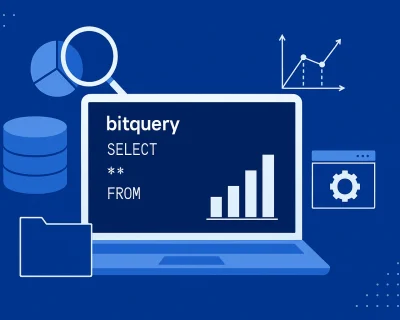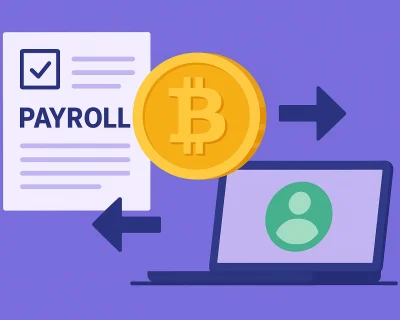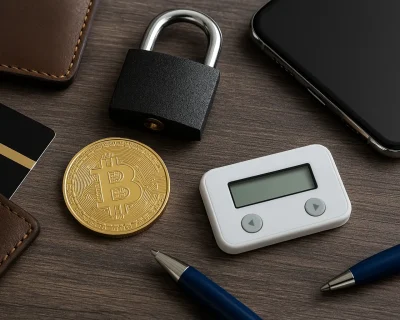What is DePIN Crypto and Its Future
The blockchain and cryptocurrency landscape rapidly evolves, with Decentralized Physical Infrastructure Networks (DePIN) emerging as a transformative force. DePIN is revolutionizing blockchain infrastructure by bridging virtual transactions with real-world applications.
As this new chapter unfolds, understanding what is DePIN crypto, its integration with existing technologies, and its potential challenges and opportunities is crucial.
Table of contents
What is DePIN in Crypto?
DePIN stands for Decentralized Physical Infrastructure Networks, peer-to-peer systems where network participants contribute physical infrastructure resources. These resources include data integrity and storage facilities, decentralized finance, telecommunications, and wireless connectivity. Participants earn rewards based on the network’s protocols.
DePIN aims to make infrastructures more efficient, transparent, and secure through blockchain technology, decentralization, token rewards, and DePIN coins. As network activity, investor interest, and user participation grow, DePIN coins gain prominence in the crypto DePIN ecosystem.
DePIN uses smart contracts and the Internet of Things (IoT) to enable physical devices to interact autonomously and in real-time. This ensures transactions are securely recorded on an immutable ledger, enhancing transparency and trust. The Internet Computer also plays a significant role, facilitating decentralized computation and boosting DePIN networks’ efficiency.
Token rewards motivate participation, encouraging users to contribute storage space and other resources. This approach spans data collection, storage, and wireless networks, with service providers earning cryptocurrency for their contributions.
DePIN Main Principles
- Blockchain as an Administrative Tool: It allows open participation in providing services.
- Blockchain as a Payment System: It facilitates service transactions and cryptocurrency rewards.
- Blockchain as a Record-Keeping Mechanism: It ensures all actions are transparently logged.
This decentralized approach makes services more accessible and reliable and opens new opportunities for infrastructural development.
Categories of DePINs: PRNs and DRNs
DePINs are divided into two main categories based on how they integrate blockchain technology with physical and digital resources:
- Physical Resource Networks (PRNs): PRNs rely on location-specific hardware to provide services like network connectivity, energy supply, and geospatial data collection. For example, wind turbines in a wind energy network generate power distributed locally. PRNs offer localized services directly linked to where their hardware is placed.
- Digital Resource Networks (DRNs): These operate independently of location, providing global access to digital resources like cloud storage, computing power, and bandwidth. DRNs enable the seamless exchange of digital assets worldwide, making them highly flexible and not tied to any specific place.
How Does Crypto DePIN Work?
Crypto DePIN networks use blockchain technology to decentralize control and management. This enhances the efficiency and fairness of systems like energy grids, supply chains, and data storage.
Key components of DePIN:
- Blockchain: The backbone of DePINs, enforcing rules through smart contracts.
- Physical Network: Hardware such as sensors, routers, and solar panels facilitate resource distribution.
- Token Rewards: Crypto tokens earned by participants providing services.
- Off-chain Networks: Handle transactions outside the blockchain, allowing users to purchase computing power and data storage.
DePINs create a self-sustaining ecosystem where participants offering unused resources earn tokens, driving growth through the DePIN flywheel effect.
The DePIN Flywheel Effect
The DePIN flywheel is a growth cycle driven by increased network usage. As service demand grows, token values rise, attracting more resource providers. This expansion boosts network capacity, drawing investor interest and furthering growth.
Top 10 DePIN Benefits
- Protocol and Consensus – Uses blockchain protocols to ensure governance, security, and a trustless network.
- Accessibility – Open to anyone, allowing broader access to technology, especially in underserved areas.
- Resource Efficiency – Optimizes underused community resources like storage and computing power, promoting sustainability.
- Affordability – Crowdsourced funding and efforts lower costs, enabling users to pay only for what they use.
- Rapid Scalability – A decentralized structure allows for fast growth without bureaucratic delays.
- Self-Sustainability – Generates income through token rewards, making it resilient and independent from external funding.
- Community Control – Distributed control ensures democratized decision-making and transparency.
- Fair Pricing – Transparent, cost-based pricing compared to traditional models.
- Cost-Efficient Operations – Minimizes expenses while maximizing service delivery.
- Incentivization – Token rewards encourage participation, making sharing resources profitable.
What Are the DePIN Challenges?
- Adoption – DePIN is still new, and only a small percentage of blockchain users actively participate. The challenge is designing a system that attracts new users and providers to drive growth and revenue.
- Tech Understanding – The complexity of blockchain and DePIN technology can confuse many, even within the crypto community. Educating the market is key to overcoming this.
- Revenue – For many DePIN projects, attracting providers offering real-world services is challenging. Ensuring that rewards are profitable is a significant hurdle.
The Best Features for Scaling DePIN Apps
For DePIN applications to scale effectively, specific blockchain architecture considerations are crucial:
- Scalability – Handling high transaction volumes and data throughput.
- Transaction Economics – Maintaining low transaction fees for sustainability.
- Interoperability – Effective communication with other networks and legacy systems.
- Security – Strong mechanisms to protect data and ensure network integrity.
- Usability – User-friendly interfaces to encourage widespread adoption.
The Future of Decentralized Physical Infrastructure Networks
The future of crypto DePIN looks promising. Technologies like 5G, edge computing, and AI will enhance DePIN projects, addressing scalability and security issues. Collaboration among stakeholders, regulatory support, and continuous innovation are key to unlocking DePIN’s full potential.
Collaboration and Innovation
To achieve this vision, we need cooperation from various stakeholders, support from regulators, and continuous technological innovation. Working together is critical to solving current problems and fully realizing the potential of decentralized physical networks.
With the proper support, DePINs can transform the world, giving individuals and communities the power to create fair and sustainable infrastructure.
Opportunities for Entrepreneurs
For entrepreneurs, DePIN offers a new way to access previously difficult markets. For instance, starting a new telecom service requires a lot of money for infrastructure and maintenance.
With DePIN, entrepreneurs can build their network by allowing everyone to participate and creating digital infrastructure. Providers set up and maintain their hardware, creating a community-run service that is flexible and community-driven.
Expanding Horizons
DePINs are already progressing in various areas, such as data storage, computation, VPNs, network access, weather data, and energy distribution. They are also exploring new fields like mobility and digital twins.
These community-driven networks are set to disrupt large markets, offering new opportunities and innovations.
Technological Integration
New technologies like 5G, edge computing, and advanced AI will improve DePIN projects. These technologies will help address issues like scalability and security, making decentralized networks more reliable and efficient.
Regulatory and Industry Collaboration
Regulations and industry partnerships will play a big role in the global adoption and impact of DePIN. DePIN projects will likely overcome current challenges as technology advances and open new opportunities for decentralized infrastructure.
Promising Future
Despite the challenges, the future of DePIN looks bright. As the demand for AI and computing grows, decentralized hardware becomes more valuable. Companies like Akash Network and Ritual are leading the way, using decentralized networks for various purposes beyond just crypto.
This presents new opportunities and risks for investors, highlighting the need for careful planning and investment in DePIN projects.
DePIN FAQ
What is DePIN crypto?
DePIN crypto refers to coins used in DePIN projects, facilitating network transactions and incentivizing participation.
What coins are DePIN?
- Filecoin (FIL): For decentralized cloud storage.
- Render Token (RNDR): For decentralized GPU rendering.
- Theta (THETA): For decentralized video streaming.
- Helium (HNT): For IoT connectivity.
- Ocean Protocol (OCEAN): For decentralized data sharing.
- Akash Token (AKT): For decentralized cloud computing.
- Arweave (AR): For permanent data storage.
Final Thoughts on DePIN
The rise of DePIN represents a pivotal evolution in the cryptocurrency industry. Crypto DePIN projects offer efficient, transparent, and secure solutions by merging digital and physical worlds. As these networks integrate technologies like AI and 5G, they promise to revolutionize sectors and create new opportunities for entrepreneurs and investors. The future of DePIN in crypto is undoubtedly bright, with its development poised to shape the next era of blockchain infrastructure.













